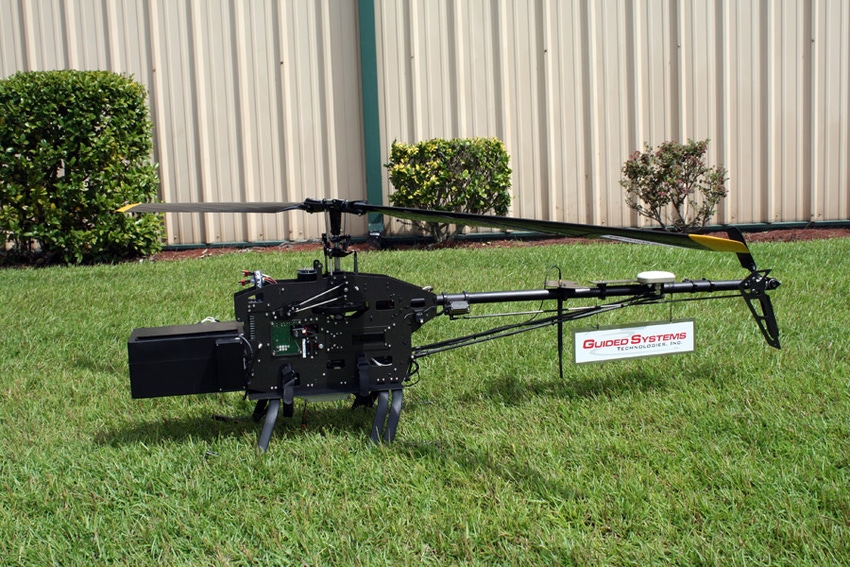
The miniature, unmanned helicopter looks like a souped-up toy.
But it’s more like a crop scout with special, detailed eyes that can fly, or hover, over a field and report specific recommendations back to a farmer. Not just on the whole field. It can help pin-point what to do in precise locations in the field.
Companies and economic developers want to make Georgia the unmanned aircraft hub for agricultural use, laying the groundwork now to get this new technology up in the air in the next few years.
University of Georgia crop specialists are working with an unmanned helicopter now at the 600-acre Sunbelt Ag Expo farm site in Moultrie, Ga., using it to capture images every two weeks by flying it over peanut and cotton research plots located there.
Want the latest in ag news delivered daily to your inbox? Subscribe to Southeast Farm Press Daily. It’s free!
Middle Georgia State College Aviation Campus provides a four-man team to fly the “missions” over the fields. They use a five-foot long, 25-pound helicopter built by Guided Systems Technology, which is based in Stockbridge, Ga.
The machine uses GPS technology to fly programmed patterns over the fields, in this case 5-acre plots. A special waiver from the Federal Aviation Administration is needed to do this.
From takeoff to landing, it takes about six minutes to cover a five-acre plot. For a 300-acre field, it’d take the copter about 30 minutes to get the job done. The battery on the copter lasts about 30 minutes and costs 20 cents to charge back up, said Chad Dennis a program coordinator with MGSC.
The copter has pre-flight safety measures programmed in to it, said Dennis. If it loses contact with the ground crew, it immediately goes to a predetermined safety level in the air and hovers until remote contact is made again. If the connection stays down, the copter lands itself at one of several predetermined landing areas. A real person using a manual remote control device launches and lands it.
The copter captures images that show the Normalized Difference Vegetation Index, or NDVI, for the peanut and cotton plots. NDVI is a quantifiable visual way to show the live, green (or lack thereof) plant growth in the plots.
And it can tell a lot, says John Beasley, UGA Extension peanut agronomist working with this project.
It finds anomalies in fields, from large sections to individual plants, Beasley said, noting the technology saves man hours in the field coupled with precise information.
“The thing we are working out are the number of flights required and the timing of the flights to best know what is happening in the fields and what can be recommended to cover it,” Beasley said. “What a farmer can then do is be able to take these images — instead of spending hours and hours walking a field to find a problem or if there is a problem, to find it early and do something about it before it becomes a big problem.”
From pest identification to disease diagnosis to water needs to fertility corrections, the technology, Beasley said, has many applications in agriculture.
Cost is high, regulation limited
The copter-system being used at Sunbelt Expo costs between $60,000 and $70,000, said Eric Corban. He founded Guided Systems Technologies 20 years ago. He spearheaded getting this project started for agriculture with the Georgia Center of Innovation for Agribusiness two years ago.
The project is funded through a $100,000 grant from the centers of agribusiness and aerospace in Georgia, with roughly $10,000 matching funds from the Georgia Peanut Commission and the Georgia Cotton Commission. There’s an in-kind match from GST, which provides two copters to the project and the labor costs from Middle Georgia College.
Corban admits the technology might cost too much now to payoff for a small, individual farmer at this time, but if and when the market can mature and regulations ease to pave the way for farm-use flights for drones, the cost might drop to $10,000 to $15,000 per helicopter.
“Only in the last three or four years have we (GST) started to see how this technology can be used in an agricultural way,” said Corban, whose customers now are military or law enforcement related.
For agriculture use, Corban sees businesses developing, particularly crop consultants, to provide the aerial service to growers, which may end up the most economical way farmers can have access to this precise information.
The NVDI or remote sensing technology used on the copter isn’t proprietary, but is widely available. Corban says his company is investing in the packaging and technical support to get it up in the air, or what he calls a ‘turn-key’ system for agricultural use.
Right now, the Sunbelt Ag Expo site is the only location in Georgia where this technology is being tested for farm use high in the air. Considered a drone, this helicopter research is only allowed through a special Federal Aviation Administration certificate of authorization, which took about a year to get approved for the project.
Private citizens don’t have permission to fly such unmanned aircraft in public air space just yet. Right now, only military or law enforcement use is permitted. But Steven Justice, director of the Georgia Center for Aerospace, says the FAA is now working to provide regulations and certification process for commercial use for unmanned aircraft.
The Georgia aerospace center is providing input to FAA. Justice hopes the administration will give this new technology the green light, particularly for agricultural, in the next year or two.
More from Southeast Farm Press
Early soil sampling recommended this fall
Kentucky study paves way for increased irrigation in the state
Two peanut field days scheduled in North Carolina
Till sparingly: There's life beneath your feet
About the Author(s)
You May Also Like






